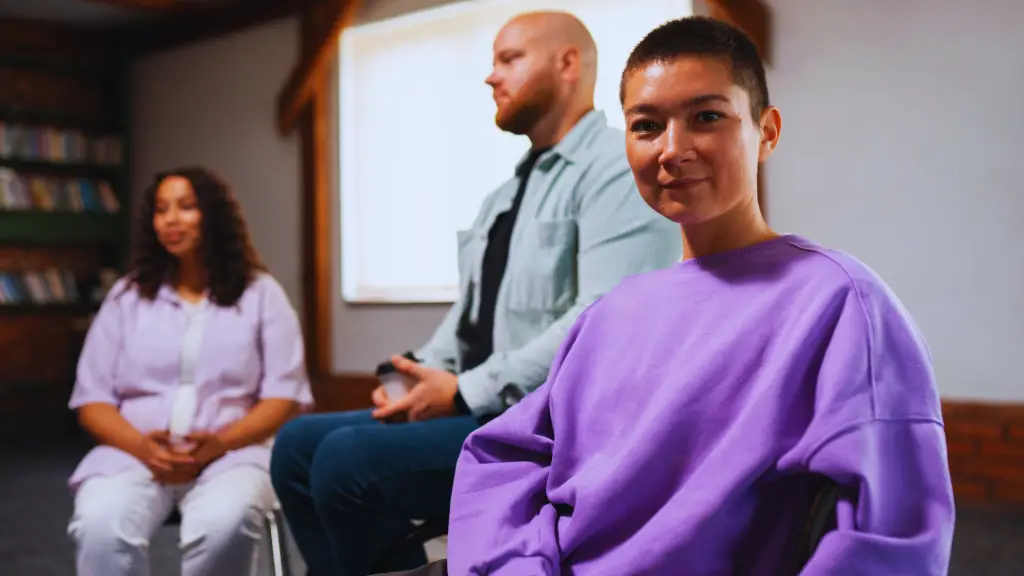In today’s digital world, a rehab center’s website is often the first interaction potential clients have with the facility. The online representation of your rehabilitation center through a thoughtfully designed website plays a vital role in connecting potential clients with your addiction recovery services, offers crucial information, and ultimately, helps people take the first step towards healing.
This article will highlight the key principles and best practices for website design practices for rehabs.
Why is website design for rehabs important?

A well-designed website enables rehab centers to transcend geographical boundaries and be accessible to potential patients around the clock. This is crucial because the decision to seek help often arises during moments of crisis or deep reflection, which can occur at any time. A website provides instant access to information about services, staff, and treatment philosophies, extending the center’s reach worldwide.
The website frequently creates the first impression for prospective clients. High-quality design, professional branding, and informative content help establish trust and credibility. This is particularly important in the sensitive field of addiction treatment, where potential patients and their families are searching for reliable, trustworthy care options.
An effective website design allows rehab centers to educate visitors about addiction and recovery, explain treatment methodologies, share success stories and testimonials, and offer resources and support materials.
A well-designed website serves as the foundation for other digital marketing efforts, including search engine optimization (SEO) to improve visibility in search results, social media integration to expand reach and engagement, content marketing through blogs and resources, and pay-per-click advertising campaigns. These efforts help rehab centers attract more potential patients and compete effectively in a crowded market.
Responsive Website Design Practices for Rehabs
As more and more people rely on mobile devices to access information and seek support, it is essential that websites are designed to be mobile-friendly.
Responsive design is a technique that ensures a website’s layout, content, and functionality automatically adapt to different screen sizes and orientations, providing users with a seamless experience across all devices.
By implementing responsive design, organizations can cater to the growing mobile user base without the need for separate mobile versions of their website. This approach is not only cost-effective but also easier to maintain, as updates only need to be made to a single website rather than multiple versions.
Mobile-friendly design has the potential to significantly enhance user engagement and increase conversion rates by allowing individuals seeking assistance to quickly and easily access crucial information and resources, regardless of the device they are using.
Build Trust With Your Website Design

A well-crafted website can serve as a formidable tool to build credibility and instill confidence in your rehab center’s services from the very first interaction.
One of the most efficient ways to build trust is through social proof. Embedding customer reviews from platforms like Google My Business can provide genuine testimonials that resonate with visitors. These real-life experiences can help alleviate concerns and demonstrate the positive impact of your treatment programs.
On top of that, prominently displaying contact details, including phone numbers and email addresses, shows transparency and accessibility, making it easier for those seeking help to reach out.
Humanizing your rehab center is another vital aspect of building trust. Including professional photos and brief biographies of your staff can help potential clients feel more comfortable and connected to your facility. This personal touch can be further enhanced by clearly stating your center’s vision, mission, and values, which gives visitors insight into your approach to treatment and recovery.
To address financial concerns, which can be a significant barrier to seeking treatment, it’s advantageous to include information about the insurance companies you work with. This transparency can ease anxiety about treatment costs and make your services more accessible.
If your website is LegitScript certified, displaying the certification badge in a visible location adds an extra layer of credibility, assuring visitors that your center meets high standards of legitimacy and quality.
Clear Navigation in Websites For Rehabs
A well-structured and easy-to-navigate website is essential for addiction treatment centers to effectively guide visitors through their services and ultimately convert them into clients. Clear navigation not only enhances the user experience but also plays a crucial role in increasing conversion rates by making it simple for users to find the information they need and take the next step in their recovery journey.
To achieve this, the website’s menu structure should be intuitive and logically organized, with clearly labeled categories that reflect the most important aspects of the treatment center’s offerings. Key sections such as “Our Programs,” “About Us,” “Admissions,” and “Contact” should be immediately visible and easily accessible from any page on the site. Additionally, incorporating a prominent search function can further enhance navigation, allowing users to quickly find the specific information they’re looking for.
Call-to-action (CTA) elements are essential components that should be strategically placed throughout the website to encourage user engagement and conversions. These CTAs should stand out visually and guide users towards taking specific actions, such as “Get Help Now,” “Verify Insurance,” or “Schedule a Consultation.”
To make these CTAs more effective, consider using color psychology and color wheel principles to select hues that evoke the desired emotional response and align with your brand identity.
For instance, blue tones can convey trust and professionalism, while warmer colors like orange or red can create a sense of urgency. The chosen colors should contrast with the surrounding design elements to ensure visibility while maintaining overall aesthetic harmony.
Color Scheme

A thoughtfully designed color palette can instill a sense of tranquility and trust while strategically emphasizing calls-to-action (CTAs) to boost conversion rates.
The cornerstone of an effective color scheme often hinges on choosing a primary color that resonates with the treatment center’s brand identity and the emotions it aims to evoke. For addiction treatment websites, colors that communicate trust, hope, and healing are often favored.
Blues, greens, and gentle earth tones are common choices as they can foster a calming and nurturing environment. Once the primary color is selected, it should be applied consistently across the website for elements such as headers, navigation bars, and background accents to maintain visual harmony.
To ensure CTAs stand out and encourage user engagement, it’s crucial to select a contrasting color that complements the main color scheme while creating visual prominence. Color wheels, like those offered by tools like Canva, can be invaluable in choosing these complementary colors. For example, if the website’s primary color is blue, employing orange or red for CTAs can generate a striking contrast that captures the user’s attention.
This technique, known as complementary color pairing, harnesses the psychological influence of color to guide users towards taking action, whether it’s reaching out to the center, verifying insurance, or scheduling an assessment.
Consistent Branding
A cohesive brand presence not only enhances the professional image of the treatment center but also builds trust and credibility, which are essential in the sensitive field of addiction recovery.
To achieve consistent branding, start by ensuring your logo, color scheme, and typography are uniform throughout the website. Prominently display the logo on every page, typically in the header or footer, and link it back to the homepage. Use your brand’s color palette consistently for various elements such as headers, buttons, and accents to create a visually unified experience.
Typography also plays a significant role in branding, that’s why you should select fonts that reflect your center’s personality and values, and use them consistently for headings, body text, and other content elements.
This consistency extends to the tone and style of written content as well. Develop a clear brand voice that aligns with your center’s mission and values, and maintain this voice across all pages and sections of the website. Whether your brand voice is compassionate, professional, or empowering, apply it consistently to create a cohesive narrative that reinforces your center’s identity and message.
Clear Call to Action
To create an effective call-to-action (CTA), it’s essential to make it crystal clear what step the user should take next, whether that’s contacting the center, scheduling an assessment, or verifying their insurance coverage.
Crafting a compelling CTA requires focusing on both its content and presentation. Use direct, action-oriented, and empathetic language, such as “Get Help Now,” “Start Your Recovery Journey,” or “Speak with a Counselor.” Steer clear of vague or passive language that might confuse or deter potential clients.
The CTA should be visually prominent on the page, utilizing contrasting colors as mentioned in the color scheme section. Ensure the button or link is large enough to be easily clickable, particularly on mobile devices.
Strategically place CTAs throughout the website, including at the end of informative sections, in the header or footer, and on landing pages. However, be mindful not to overwhelm users with too many CTAs, instead, concentrate on one primary action per page.
Consider using urgency or scarcity tactics where appropriate, such as “Limited Beds Available” or “Call Now for Immediate Assistance,” to encourage prompt action from potential clients.
High-Quality Images

Using authentic photographs of your staff and facility can greatly strengthen the bond between potential clients and your center by offering a genuine look into the recovery process environment and the people involved. These real images foster a level of transparency that stock photos simply cannot achieve.
When visitors see actual staff members and the treatment spaces, it enables them to picture themselves in that supportive setting, making the idea of seeking help less intimidating. This visual authenticity holds particular significance in the context of addiction treatment, where personal connection and trust are of utmost importance.
Bona fide images contribute to the overall visual appeal of your website, making it more engaging and inviting. They help demystify the treatment process by showcasing the real spaces where recovery takes place, potentially reducing anxiety for those considering treatment.
Final Thoughts from Behavioral Health Partners
By incorporating the design principles and best practices discussed, you can create a welcoming, informative, and trustworthy online environment that accurately reflects the quality of care your rehab center provides. When evaluating your own rehab center’s online presence, consider viewing your website from the perspective of someone seeking help. Ask yourself: Is the website easy to navigate? Does it offer clear and compassionate information? Does it inspire trust and confidence in your services?
If you’re unsure or looking for ways to improve your website, the team at Behavioral Health Partners is available to assist you.

